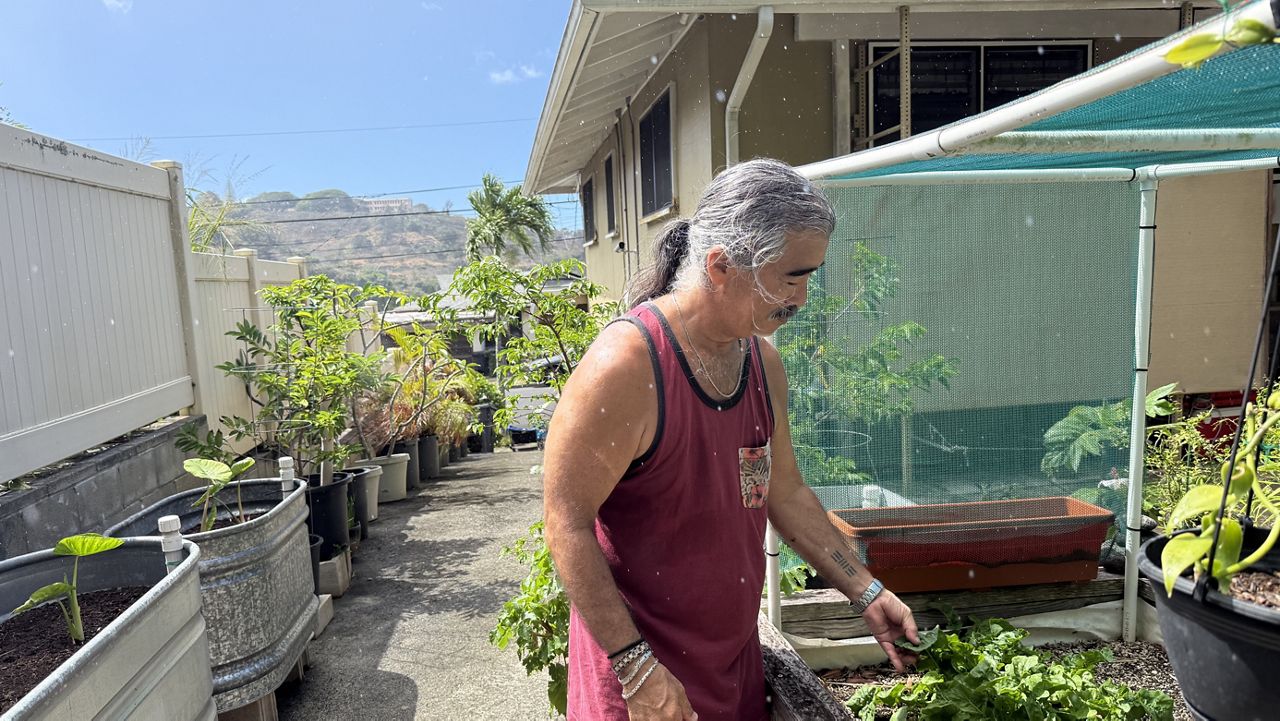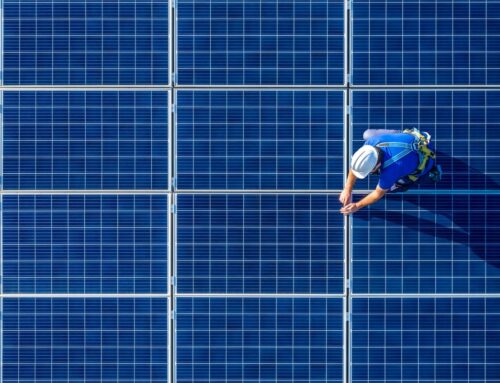Nonprofit working to expand program that provides free rain barrels
October 6, 2025
On a September morning at a home in Moanalua, Grant Herbet of Pono Home is using a power drill to cut a hole in the gutter’s downspout in order to connect it to a 50-gallon rain barrel, which will catch rainwater flowing off the rooftop and can be emptied via a spigot by the homeowners as they water their garden. In less than 10 minutes, he is finished with the installation.
The installation of the brand-new rain barrel is part of a pilot program — the Rainwater Capture Incentive Program — started by the nonprofit Mālama Maunalua, which awarded free rain barrels, and other green stormwater infrastructure, to nearly 300 households across Oahu.
With the pilot no longer accepting applicants, Mālama Maunalua is now hoping to capitalize on what they learned, teach more people and organizations about rain barrels and raise additional funds to expand the program, according to Weiant.
“It’s a starting point. It’s a message, and it is helping to get the word out there in the community that this is a solution (to mitigate environmental harm),” said Pam Weiant, the director of science and planning at Mālama Maunalua, who spoke with Spectrum News Hawaii during the installation of the rain barrel at the Moanalua home about the success of the pilot program.
Rain barrels capture rainwater from the roofs of residential properties, before it flows down the street, collecting pollutants and sediment, and eventually makes its way into the ocean untreated. The pollutants cause harm to human health by contaminating water and to coastal ecosystems by killing marine life and causing invasive algae blooms, which smother native algae, seagrass and coral.
“It would be pretty amazing if every household had one,” said Weiant. She said rain barrels are beneficial for any home in Hawaii whether rural, urban or suburban, as they reduce flooding and also help to recharge the aquifer by capturing rainwater that would otherwise flow into storm drains and instead, as the barrel is emptied, the water slowly infiltrates into the ground.
Mālama Maunalua found the biggest hindrance to getting individuals to implement green stormwater infrastructure, which includes rain barrels, rain gardens, and planting native trees, is knowledge and cost. Weiant said the price of a rain barrel and diverter is about $150-180, in addition to the fee for a service provider to install it — although some people will be able to do the installation themselves. The pilot program provided both education and free rain barrels, making it easy for Oahu residents to participate.
For the pilot program, Mālama Maunalua solicited applications from residents and covered the costs and installation of about 260 rain barrels. Another 40 homes received a custom-designed 100-square-foot rain garden or an appropriate native tree, which were alternative options for rainwater capture that might be a better fit for homes without gutters. (Mālama Maunalua purposefully awarded less of the latter two options because they are more expensive, requiring a contractor to individually design the rain garden and select the trees.)
Weiant said they gave preference to applicants who lived in kupuna-led, multi-generational and lower-income homes. Installations began in August, with Mālama Maunalua coordinating with homeowners and those who would install the rain barrels, such as Pono Home, a company that focuses on energy-efficient solutions and was selected to be a service provider for the pilot via a Request for Proposal process.
In total, 2,300 households submitted applications for the Rainwater Capture Incentive Program, demonstrating to the nonprofit that there is interest in stormwater capture and motivating them to work to expand the program.
Mālama Maunalua’s pilot program was supported by the City and County of Honolulu Department of Facility Maintenance and funded by Hawaii Community Foundation, Ulupono Initiative and the Board of Water Supply’s Water Sensible Rebate Program. The latter organization’s rebate program offers $40 per rain barrel, which anyone can apply for, and for Mālama Maunalua this came out to $12,000 for the 260 rain barrels.
Currently, the nonprofit is working with City and County of Honolulu officials to determine how to expand the program and has also received funding from the state Department of Health’s Clean Water Branch to install rain barrels in Wailupe. Weiant said it will be a piecemeal approach to fundraise for the expansion of the program.

After the installation of the rain barrel, a light drizzle started to fill it up. Here, homeowner Curits Miyashiro shows off his garden, which he plans to hydrate with water from the rain barrel. (Spectrum News/Michelle Broder Van Dyke)
When Curtis Miyashiro and his wife bought their property on Ala Hoku Place in Moanalua, he hated that most of the yard was covered in concrete, but he worked around it by growing plants in pots. He has an avocado, mango, and multiple citrus trees, a native hibiscus, lettuces, arugula, and recently planted kalo in a wicking-garden bed. “We want to grow something we can eat,” said Miyashiro, who explained the rain barrel will collect water for their plants.
Before receiving the rain barrel via the Rainwater Capture Incentive Program, Miyahshiro already had a rain barrel — a slightly different style rain barrel, which requires the downspout to be cut for direct flow into the barrel, bypassing the need for a diverter. Weiant said that in the future the application should ask whether a homeowner already has a rain barrel, although some people may benefit from more than one.
“We’ve learned lessons,” said Weiant.
Additionally, she said they learned a lot about logistics, such as how to order rain barrels, when to schedule home visits, and which service providers can install rain barrels.
“It’s the lessons learned that are really important because we are sharing this information with other community groups around the island that are interested in doing similar work, so they now have the steps and know how to do it,” said Weiant.
Michelle Broder Van Dyke covers the Hawaiian Islands for Spectrum News Hawaii. Email her at michelle.brodervandyke@charter.com.
Search
RECENT PRESS RELEASES
Related Post


